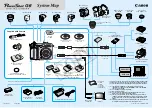
4
D4222901M
Copyright © 2013 - 2018 TOSHIBA TELI CORPORATION, All rights reserved.
http://www.toshiba-teli.co.jp/en/index.htm
USAGE PRECAUTIONS
Handling of the protective cap
If the camera is not in use, attach the lens cap to the camera to protect the image pickup surface.
If the equipment is not to be used for a long duration
Turn off power to the camera for safety.
Maintenance
Turn off power to the equipment and wipe it with a dry cloth.
If it becomes severely contaminated, gently wipe the affected areas with a soft cloth dampened with
diluted neutral detergent. Never use alcohol, benzene, thinner, or other chemicals because such
chemicals may damage or discolor the paint and indications.
If the image pickup surface becomes dusty, contaminated, or scratched, consult your sales
representative.
Disposal
When disposing of the camera, it may be necessary to disassemble it into separate parts, in
accordance with the laws and regulations of your country and/or municipality concerning
environmental contamination.
[Phenomena specific to CMOS sensor]
“This symbol is applicable for EU member states only”
Defective pixels
A CMOS image sensor is composed of photo sensor pixels in a square grid array. Due to
the characteristics of CMOS image sensors, over- or under-driving of the pixels results in
temporary white or black areas (as if these are noises) appearing on the screen. This
phenomenon, which is not a defect is exacerbated under higher temperatures and long
exposure time.
Image shading
The brightness of the upper part of the screen may be different from that of the lower part. Note
that this is a characteristic of a CMOS image sensor and is not a fault.







































